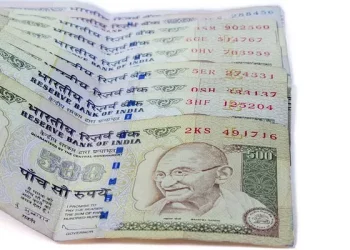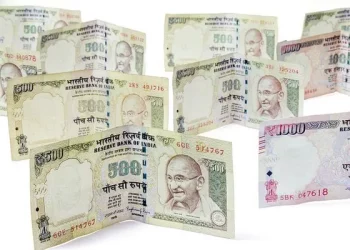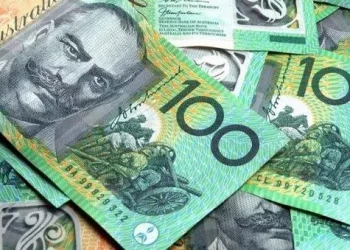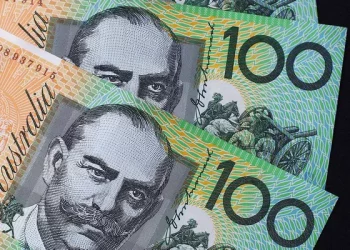Currency exchange is an integral part of global trade, investment, and travel. For businesses, tourists, and traders alike, understanding how exchange rates work can save money and open opportunities. A frequent question among travelers and market participants is, What is $125 Canadian in US dollars? While a straightforward conversion can provide an immediate answer, there are several layers of complexity to consider, such as exchange rates, fees, market fluctuations, and economic factors that influence these rates.
In this article, we’ll not only answer the question but also explore the mechanisms of currency exchange, factors affecting exchange rates, and how traders and consumers can optimize conversions. Whether you’re planning a trip, running a business, or trading in the foreign exchange market, this article will help you understand the dynamics of the Canadian Dollar (CAD) to US Dollar (USD) exchange rate.
1. The Basics of Currency Conversion
Currency conversion is the process of exchanging one country’s currency for another at a specific exchange rate. For instance, converting 125 Canadian dollars (CAD) to US dollars (USD) involves multiplying the amount of CAD by the current CAD/USD exchange rate.
Exchange Rate Formula
The formula for currency conversion is:
Amount in USD=Amount in CAD×Exchange Rate (CAD to USD)
For example, if the CAD/USD exchange rate is 0.75, then:
125×0.75=93.75 USD
Thus, $125 Canadian is equal to $93.75 US dollars at an exchange rate of 0.75.
2. Determining the Current Exchange Rate
Exchange rates fluctuate continuously based on supply and demand in the global forex (foreign exchange) market. The CAD/USD rate depends on multiple factors, such as:
Economic Data: Interest rates, inflation, and GDP growth in Canada and the United States significantly influence the CAD/USD exchange rate.
Market Sentiment: Risk appetite, geopolitical events, and global economic stability can impact how investors perceive the CAD and USD.
Central Bank Policies: Decisions by the Bank of Canada and the US Federal Reserve, such as interest rate changes or quantitative easing, affect their respective currencies.
Commodities Prices: The Canadian economy heavily relies on oil exports. Higher oil prices often strengthen the CAD, while declining oil prices may weaken it.
You can find the latest CAD/USD rate by checking financial news platforms, forex trading apps, or banks.
3. Additional Costs in Currency Conversion
While the exchange rate provides the base calculation, real-world currency conversions often include additional costs:
Transaction Fees
Banks, currency exchange offices, and online platforms typically charge a fee for converting currency. This fee can vary:
- Banks may charge 1–3% of the transaction amount.
- Currency exchange kiosks in airports may offer less favorable rates and higher fees.
- Online platforms like PayPal or Revolut may include hidden costs in their rates.
Spread
The “spread” is the difference between the buy rate (what institutions pay to purchase CAD) and the sell rate (what they charge customers for USD). Spreads represent a hidden cost of conversion.
Cross-Currency Calculations
If the conversion involves intermediary currencies, such as converting CAD to Euros (EUR) through USD, the fees and spreads may increase.
For example, if the CAD/USD exchange rate is 0.75 but the institution charges 0.73 after fees and spreads, the real amount received for $125 CAD would be:
125×0.73=91.25 USD
4. Historical Trends in the CAD/USD Exchange Rate
Understanding historical trends can provide context for current rates and help forecast future movements. Over the past decade, the CAD/USD exchange rate has ranged widely, from below 0.70 to over 0.85.
Key Historical Events Affecting CAD/USD:
Oil Price Fluctuations: In 2014, oil prices plummeted, weakening the CAD against the USD.
Pandemic Impact (2020): The COVID-19 pandemic caused sharp movements in the forex market, with the CAD initially weakening due to lower oil demand but recovering as commodity prices rebounded.
Monetary Policies: Interest rate hikes by the US Federal Reserve in 2022 strengthened the USD, while Canada’s corresponding rate adjustments mitigated some of the CAD’s losses.
5. Optimizing Currency Conversion
Timing the Market
For travelers or businesses making significant transactions, timing can make a big difference. Monitoring exchange rates and converting during favorable market conditions can result in substantial savings.
Using Online Currency Platforms
Platforms like Wise, Revolut, and XE offer competitive rates compared to banks and traditional currency exchange kiosks. They often display live rates and charge lower fees.
Hedging in Forex Markets
For businesses or investors exposed to CAD/USD volatility, hedging strategies such as forward contracts or options can lock in favorable rates and mitigate risk.
6. The Role of Forex Traders in CAD/USD Conversions
Forex traders actively trade currency pairs like CAD/USD to profit from short-term fluctuations. These traders use technical analysis, economic data, and news events to make informed decisions.
Trading Strategies:
Scalping: Profiting from small price movements within minutes or hours.
Swing Trading: Holding positions for days or weeks to capitalize on medium-term trends.
Carry Trade: Earning interest by borrowing in a low-yield currency (e.g., USD) and investing in a higher-yield one (e.g., CAD).
7. How Economic Factors Shape the CAD/USD Exchange Rate
Interest Rates
Higher interest rates attract foreign capital, strengthening the currency. If the Bank of Canada raises rates while the Federal Reserve holds steady, the CAD may appreciate against the USD.
Inflation Rates
Low inflation supports a stronger currency. Persistent inflation in Canada could weaken the CAD if it erodes purchasing power relative to the USD.
Trade Balance
A trade surplus, where exports exceed imports, supports currency strength. Since Canada is a major exporter of oil and natural gas, a strong trade balance typically strengthens the CAD.
8. Practical Example: Calculating CAD/USD Conversion for Travelers
Imagine a traveler is preparing for a trip to the United States. They check the CAD/USD exchange rate, which is currently 0.77. After factoring in a 2% fee charged by their bank, the effective rate becomes 0.7546.
Calculation:
125×0.7546=94.33 USD
This traveler would receive $94.33 USD for $125 CAD after fees.
Conclusion
Understanding the conversion of $125 Canadian into US dollars reveals much about the complexities of forex trading and currency exchange. While a simple calculation based on the current exchange rate provides a direct answer, real-world transactions involve additional considerations like fees, spreads, and market timing.
Whether you’re a traveler, a business owner, or a forex trader, staying informed about exchange rates and optimizing your conversion process can save money and reduce risks. Monitoring economic trends, using online platforms, and timing your conversions strategically are key to navigating the dynamic forex market effectively.
Related Topics:




























